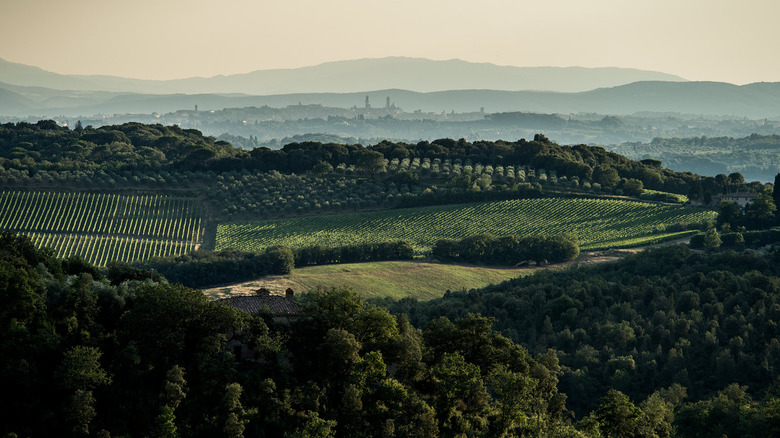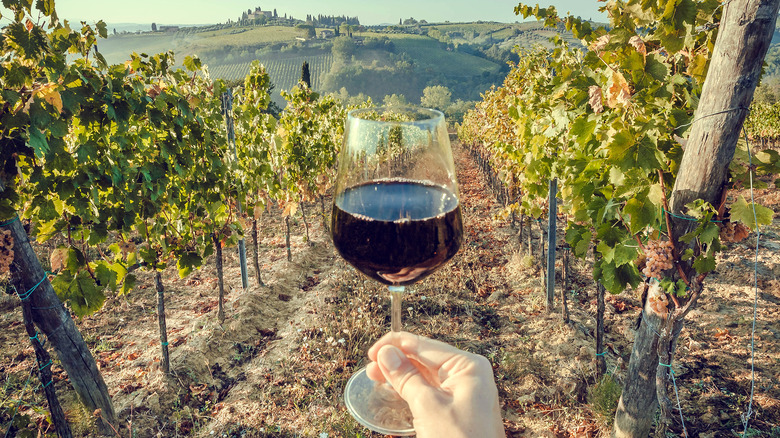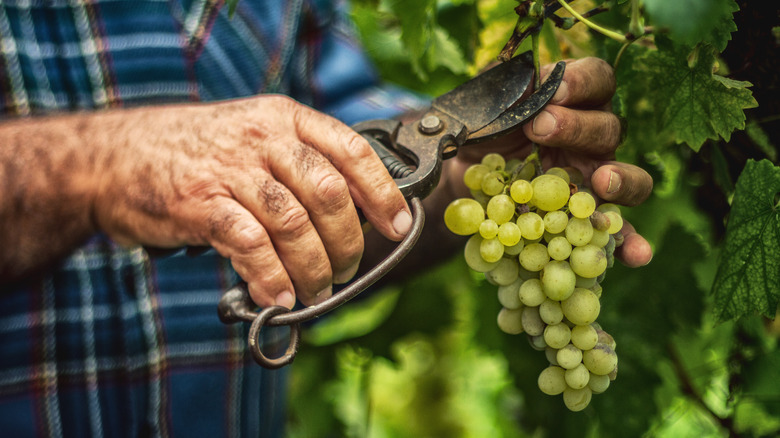Why Using Native Grapes Has Its Advantages In Winemaking
The country of production can often be a deciding factor when purchasing a bottle of wine. Perhaps you visited the area and can't stop dreaming about the dazzling vineyards, or maybe you're cooking French cuisine, and Bordeaux makes the perfect pairing. Whether or not your interest extends beyond imbibing, the context and history of wine coexist in every sip.
Although the history of winemaking has only recently been tracked to the Caucasus, many popular grapes we know today had their beginnings in what is now Europe. For example, classics like pinot noir, cabernet sauvignon, and chardonnay come from France. As anyone with a taste for American wine knows, many of these grapes thrive stateside. Since the U.S. does not have native Vitis vinifera (the grape species traditionally used in winemaking), it makes sense that international varieties are commonly planted after decades of experimentation to find the best match between land and vine.
Successful vineyards have grown across the country, but there's something to be said about grapes grown in their native land. In terms of sensory traits and cultural relevance, native grapes do provide an advantage in winemaking. Leonardo Bellaccini, oenologist of San Felice Wine Estate in Tuscany, explains, "Having developed in a specific territory, [native grapes] are often better suited to the local climate, soil, and environmental conditions. This means that they are able to thrive and contribute to best expressing the unique characteristics of the territory, enhancing its peculiarities."
How does terroir affect the vines and wines?
If sangiovese didn't grow so well in Tuscany, where Leonardo Bellaccini works, chances are it would have been pulled out in favor of another variety centuries ago. It might not seem obvious when you take a sip of wine, but the various sensory qualities like acidity, fruit ripeness, intensity, and body are a result of what's happened in the vineyard and cellar. The winemaking process can shape some elements, but nothing can replace a landscape intrinsically tied with a variety of grapes for centuries.
With regards to terroir, factors such as sunlight, climate, altitude, and soil type can all produce different styles of wine. Even more notable, specific aroma compounds, such as citrus, berries, pepper, and herbs, are all connected with the particular characteristics of the local terroir, as evidenced by a study published in 2023 by the International Viticulture & Enology Society.
As Bellaccini points out, "Native vines, often evolved and adapted to the specific terroir, faithfully reflect the characteristics of the place where they were grown. The result is unique and recognizable wines that, through scents and flavors, tell the story of the region of origin and the vine-environment integration shaped over the centuries."
What role does culture play in winemaking?
Whereas terroir plays a significant part in the growth of the vine, translating its characteristics into the fruit and eventually into the wine, the final product does not occur absent humans. Even low-intervention winemaking requires many decisions, such as harvest date, fermentation duration, and the vessel type used, each influencing the resulting wine. Experimental winemakers can play around with these elements as they see fit, but regions with a strong viticultural history typically fix the parameters.
Most notably, this occurs in Europe, where centuries-long traditions of winemaking have set the status quo. Aside from setting regulations regarding practices in the cellar, specific grape varieties are listed as acceptable for use, often with priority given to indigenous grapes that have been farmed for generations. The basis of the Protected Designation of Origin (PDO) certification system common throughout the continent rests on growing grape varieties that are native to a specific geographical area.
In countries with a strong viticultural history, customs are passed on over generations as winemakers develop knowledge working with certain varieties. This familiarity with indigenous grapes is ingrained into the character of local wines and their crafters, offering a taste of the viticultural heritage of a region that shouldn't be lost. As Leonardo Bellaccini asserts, "Native vines represent the preservation of local culture."


